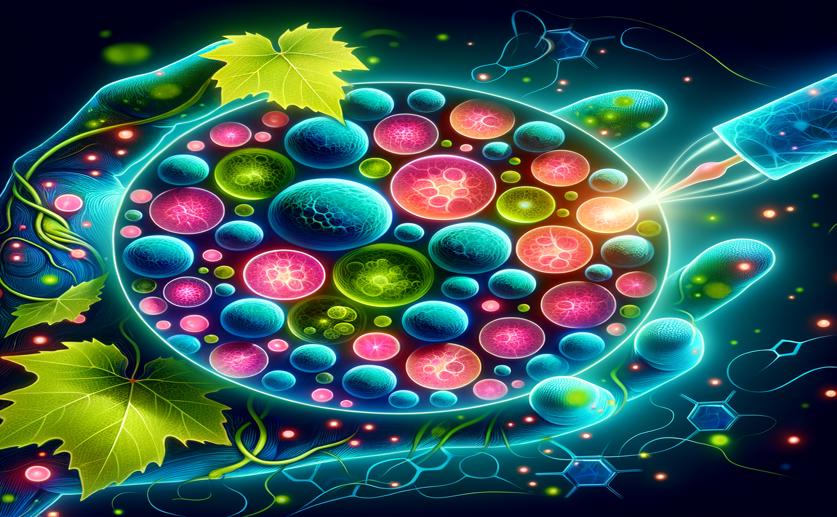
Boosting Grape Cell Health: New Technique Enhances Growth and Gene Activity
Jenn Hoskins
12th July, 2024

Image Source: Natural Science News, 2024
Key Findings
- The study by the Centre of Biotechnology of Borj Cedria explored cryopreservation methods for grapevine embryogenic cells
- Encapsulation/dehydration resulted in higher survival rates (81%, 62%, 48%) compared to encapsulation/vitrification (58%, 42%, 32%)
- Cryopreservation improved post-thaw recovery and regeneration efficiency, with regrowth rates of 54-72% versus 11-17% in control samples
References
Main Study
1) Osmotic priming-induced cryotolerance uncovers rejuvenation of grapevine cell cultures: morphogenetic changes and gene expression pattern highlighting enhanced embryogenic potential.
Published 9th July, 2024
https://doi.org/10.1007/s00709-024-01968-5
Related Studies
2) Current status of the cryopreservation of embryogenic material of woody species.
3) Up-regulation of a stress-responsive endochitinase VvChit-IV in grapevine cell cultures improves in vitro stress tolerance.



 11th July, 2024 | Jim Crocker
11th July, 2024 | Jim Crocker